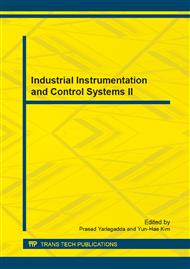p.1412
p.1416
p.1422
p.1426
p.1430
p.1434
p.1439
p.1445
p.1449
Research on Avatar-Included Virtual Environment Modeling and Testing
Abstract:
It is possible to model and evaluate avatar-included virtual environment in the condition of advanced hardware and software technologies of digital 3D. In traditional design and evaluation, there is no interaction between digital virtual scene and avatars, and no dynamic modifying options for virtual scene. Interaction and dynamic design option are the most important functions for virtual reality simulation. The paper presented the modeling method of avatar-included virtual scene first, discussed the method of testing and evaluating for it secondly. The research can assist and support realization of avatar-included virtual scene real-time interaction, testing and evaluating for stability, security and humanoid.
Info:
Periodical:
Pages:
1430-1433
Citation:
Online since:
July 2013
Authors:
Price:
Сopyright:
© 2013 Trans Tech Publications Ltd. All Rights Reserved
Share:
Citation:


